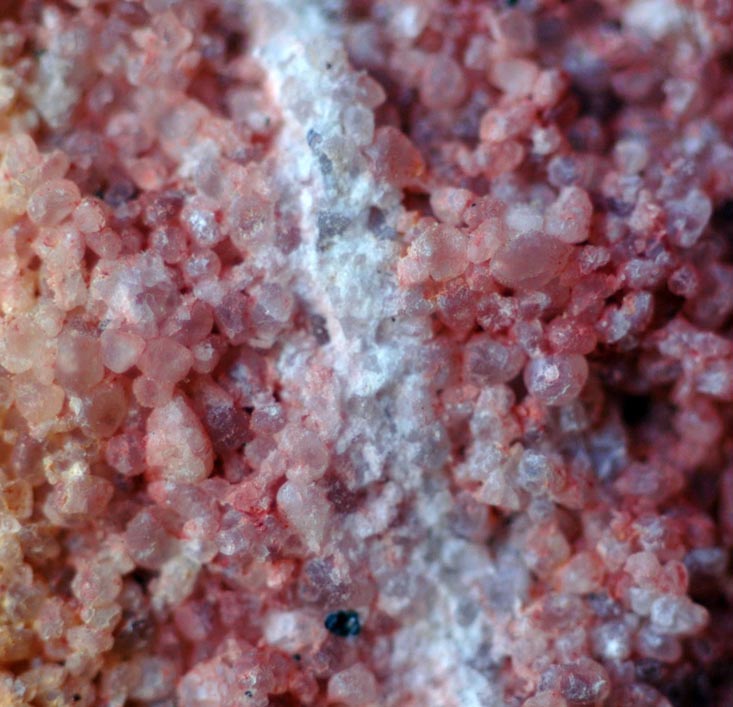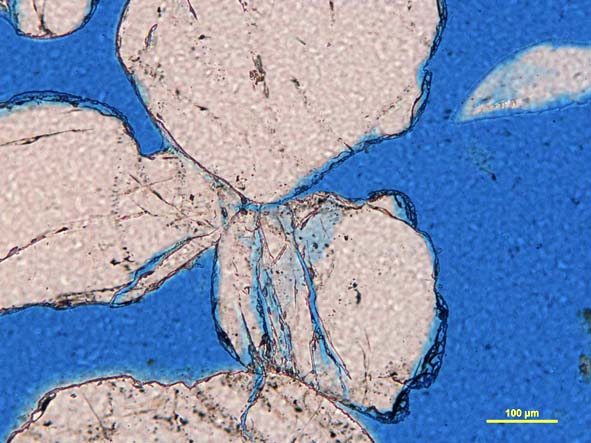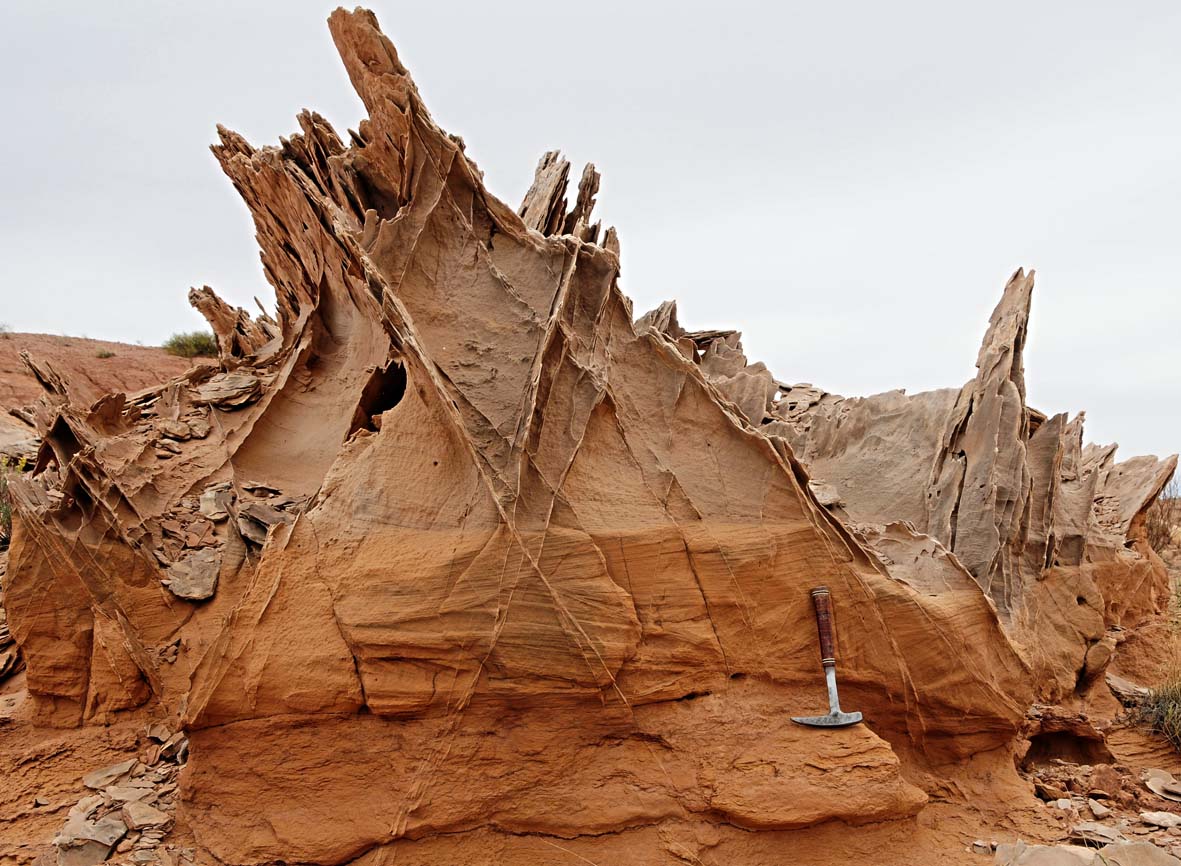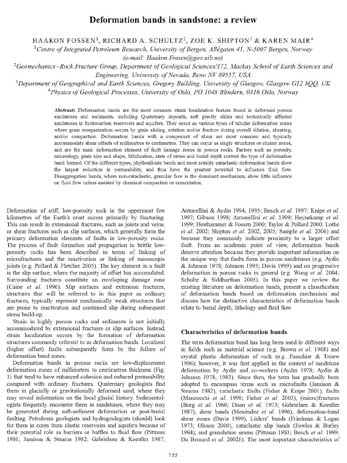.jpg)
General
My research on deformation bands springs out of my fascination of these structures while doing field work on the Colorado Plateau in 1993 and onward. In the Navajo and Entrada sandstones, deformation bands stand out as impressive and eye-catching structures for anyone interesting in deformation of porous sandstones. I have since looked at deformation bands many places in the world, including Nevada, California, Sinai, France, Chile, Denmark and Norway. One of my main goals is to understand the key conditions that govern deformation banding. What is the critical lithologic and stress conditions for their formation? How do they develop in different lithologies? What control whether cataclasis is important or not? I search for answers to questions like these mainly through field observations and related analyses. Modeling of these structures using flow simulators is also something that I have been involved in (although this is not really my field of expertice). 
Single deformation band in Entrada Sandstone near Goblin Valley State Park. Note variation in thickness along strike.
Occurrence and mechanism
 Photo: Cataclastic deformation band in Nubian Sandstone, Sinai (25% porosity).
Photo: Cataclastic deformation band in Nubian Sandstone, Sinai (25% porosity).
Deformation bands form in porous media with porosity > ca. 15%. However, they can occur in sandstones with almost no porosity if much of the porosity reduction has taken place after band formation. Hence, understanding the burial and lithification history relative to timing of deformation is crucial. When it comes to deformation mechanism, state of stress, and therefore burial depth, is important together with the number and nature of grain contact points in the rock or sediment. Stress is transmitted across grain-grain contact surfaces, and recalling that stress (traction) is the force over the area across which it acts, it becomes clear that grain fracture occurs more easily when contact points are few, or when grains are well rounded and sorted. Mineral type and strength are also important.

Photo: Incipient fracture of quartz grains in poorly consolidated sandstone in Provence, France. Note the close connection between grain-grain contact points and fracture location and orientation.
Deformation bands occur where stress or strain has been sufficient high for the rock to respond by this type of localization. Hence the distribution and orientations of deformation bands may be very different, from setting to setting, for example in a setting of extensional faulting versus a fault-propagation fold zone.
Deformation band damage zones
Deformation bands are precursors to faults in highly porous sandstones. They start out as single structures, develop into clusters or multi-clustered zones prior to the formation of a through-going slip surface. Then bands are added as the fault accumulates slip, so that the zone widens as the fault grows larger. The width of the damage zone depends on lithology, fault linkage and other fault growth complexities, but we now have enough data to statistically characterize both the width of the damage zone and the density of bands within it for porous sandstones (Schueller et al., in prep.).

Photo of deformation bands (foreground) in the footwall to the Bartlet fault segment of the Moab Fault system, Utah. The fault is to the left and can be seen across the wash.
Influence on fluid flow
 This photo shows how deformation bands get thicker and more frequent from the very fine-grained and poorly sorted lower part at the hammerhead, to the medium-grained well-sorted sandstone in the upper part. Molly's Castle, Utah.
This photo shows how deformation bands get thicker and more frequent from the very fine-grained and poorly sorted lower part at the hammerhead, to the medium-grained well-sorted sandstone in the upper part. Molly's Castle, Utah.
Most deformation bands involve some reduction in porosity and permeability, particularly those that involve cataclasis. However, these properties tend to vary along the bands or even along band clusters, and it is unlikely that they can seal any significant oil column. Nevertheless, if there are enough bands with a preferred orientation, they introduce a heterogeneity that may stear the flow of fluids (oil, injected water or injected CO2) in a subsurface reservoir. We can model these effects to some extent, even though there is a resolution or upscaling problem due to the small thicknesses of deformation bands.
What are deformation bands?
Deformation bands, as defined here, are tabular strain localization structures that form in highly porous sediments and rocks, notably sand(stone), but also some limestones and tuffs. They are generally thought to be expressions of strain hardning and most deformation bands invove a significant reduction in porosity. They involve grain sliding and rotation and, in many cases, also cataclasis (grain fragmentation).
Simple animation of the growth of deformation bands into a small fault structure.
Why study deformation bands?
• They tell us something abou how faults form in porous sandstones.
• They show such a large variation in occurrence and characteristics that they are begging to be studied.
• They are low-strain structures that can be reproduced in the laboratory.
• They have some impact on fluid flow, and therefore of interest to oil companies.
• They are simply very charming structures, intriguing to any structural geologist that has taken the trouble of looking at deformed sandstones.

Learn more about deformation bands
Read this review article.
See this presentation


